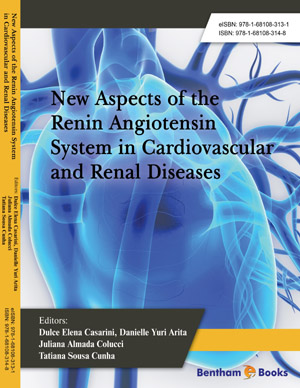Abstract
The renin-angiotensin-system (RAS) constitutes a key hormonal system in both the acute and long-term maintenance of blood pressure. Indeed, inappropriate regulation of this system is a major contributor to various pathologies that impact kidney function and blockade of the RAS either through attenuation of angiotensin converting enzyme (ACE) activity or angiotensin type 1 receptor (AT1R)-dependent signaling has important therapeutic benefit. The RAS is no longer considered a monolithic peptidergic system whereby Ang II is the sole effector acting through the AT1R, but a diverse system that reflects multiple peptides with distinct actions that are mediated by multiple receptors. The ACE-Ang II-AT1R axis is considered the classic pathway of the RAS that upon activation contributes to a number of peripheral and central mechanisms to effectively regulate blood pressure. However, the dysregulation of the AT1R axis may lead to sustained hypertension, inflammation, and an imbalance in redox mechanisms, cellular fibrosis, and other pathological responses. The ACE2- Ang-(1-7)-AT7R axis is now defined as the non-classical pathway of the RAS that in many situations exhibits actions that are opposite those of the Ang II-AT1R axis. The cellular actions of the Ang-(1-7)-AT7R axis primarily reflect the stimulation of both nitric oxide and prostaglandin pathways that would contribute to lower blood pressure and attenuation of inflammation, fibrosis and cellular injury. Moreover, the progression of various pathologies attributed to a stimulated Ang II-AT1R axis may, in part, reflect a reduced Ang-(1-7) tone. The current review assesses the non-classical axis of the RAS regarding the cellular and intracellular pathways for the expression and metabolism of Ang-(1-7), as well as the influence of the peptide in fetal-programmed hypertension.
Keywords: Angiotensin converting enzyme 2, Epithelial to mesenchymal transition, Fetal programming, Glucocorticoids, Natriuresis, Neprilysin, Peptide metabolism, Renin-angiotensin system, Thimet oligopeptidase.






















